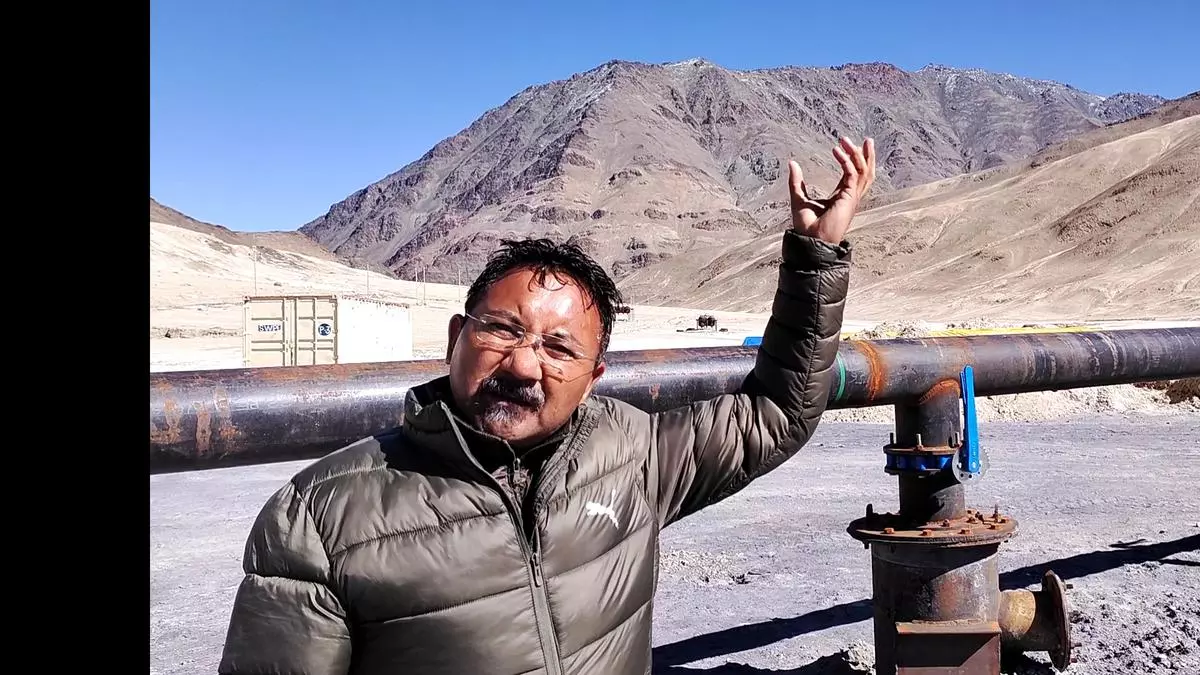Come April, ONGC, India’s premier oil and natural gas company, will begin its second campaign in Puga valley, some 180 km south east of Leh, the capital of Ladakh. The first campaign began on August 2, 2022, when its drill bit broke the rocky Puga ground and began boring down.
But unlike elsewhere, the hydrocarbon producer is not looking for oil or gas here, nor would it drill as deep as it typically does. Yet, the success of first of its kind campaign in India means a lot to the region and the country.
The idea was to drill well a kilometer into the ground so that the very hot water underneath could gush up to the surface.
Notably, the ONGC succeeded in its mission at just 40 meters when a ‘blowout’ happened. The result was a piping hot water fountain, some 50 feet high.
By all accounts, it was a glorious sight and brought smiles to the ONGC engineers there, but not just because it was a beautiful spectacle to behold. It was a conclusive proof for the geothermal potential of Puga valley. Even at 40 meters, they got waters at 130 degrees Celsius. Now they are sure that at the target depth of 1,000 meters, water as hot as 220 degrees Celsius would spring up to greet them.
The engineers quickly capped the well and, because winter was fast approaching, they let the matter rest there for the time being.
But in April 2023, men and machines would arrive at the beautiful, rocky desolation of interior Ladakh to pick up where it left off. In months after that, India would have its first geothermal power plant. It’d be a small, 1 MW plant, but nonetheless significant because more would follow.
ONGC Energy Center’s Director General, Ravi told businessline that the plan is to drill two wells in Puga and a few more in the Chumathang valley, some 40 km away. The center has spent ₹30 crore so far, and would spend roughly the same amount in the coming months on the project. ONGC is advised by Iceland Geothermal (ISOR)—Iceland is the world leader in geothermal energy.
On a visit to Puga and Chumathang recently, this writer saw a few wells with hot water bubbling out of them, punching a mild crackling, soothing sound into the chilly stillness. The Puga valley, which is surrounded by Himalayan mountains rising 6,000 meters, is 15 km long and 1 km wide—roomy enough for trucks to roll in and power plants get erected.
Nawang Thinless, a renewable energy expert in Leh who recently won a ‘Business Leader of the Year-2022’ award from the Gulf Cooperation Council, Dubai, is the coordinator for ONGC’s project. He told this writer that the Ladakh has potential of about 200 MW of geothermal plants. ONGC’s Ravi said that if Puga and Chumathang were connected underground, the potential could be even higher.
But isn’t 200 MW too little?
Impactful project
Thinless noted that one ought to look at 200 MW of geothermal, not for its size, but for its impact on the region. Indeed, even a fraction of that capacity would be impactful.
Flowing rivers gift Ladakh surplus electricity in summers. But in winters, when more energy is needed for heating, the rivers freeze, leaving the region with power-shortages. The region has immense potential for solar, but that is of not much help in winters because the generation is less due to low insolation.
However, geothermal projects would make the region self-sufficient in winters too—and in summers, Ladakhis would be able to earn revenue by exporting power to other regions.
Geothermal energy need not be in the form of electricity—the heat can be used for space heating. In one instance, geothermal energy was used to incubate poultry and growing mushrooms, in a hut of 500 sq m.
Experts say that the Puga geothermal waters contain cesium. 10 tons of cesium are released from the geothermal water annually. And, the region is rich in borax, an industrial mineral.
Game changer
Geothermal, which can provide 24×7 green electricity could be a tool for handling intermittency of wind and solar power. India is estimated to have a geothermal potential of 10,600 MW, with contributions mainly from Ladakh, Chhattisgarh and Gujarat.
Indeed, Puga, whose waters have the highest enthalpy (heat content) has been investigated since the 1970s, but things are moving only now. Ravi and Thinless are sure that the first pilot project will come up in a year. The hope is that it will open up a new source of renewable energy.
(The visit of this writer to Puga for this article was under a financial grant provided by Earth Journalism Network)
